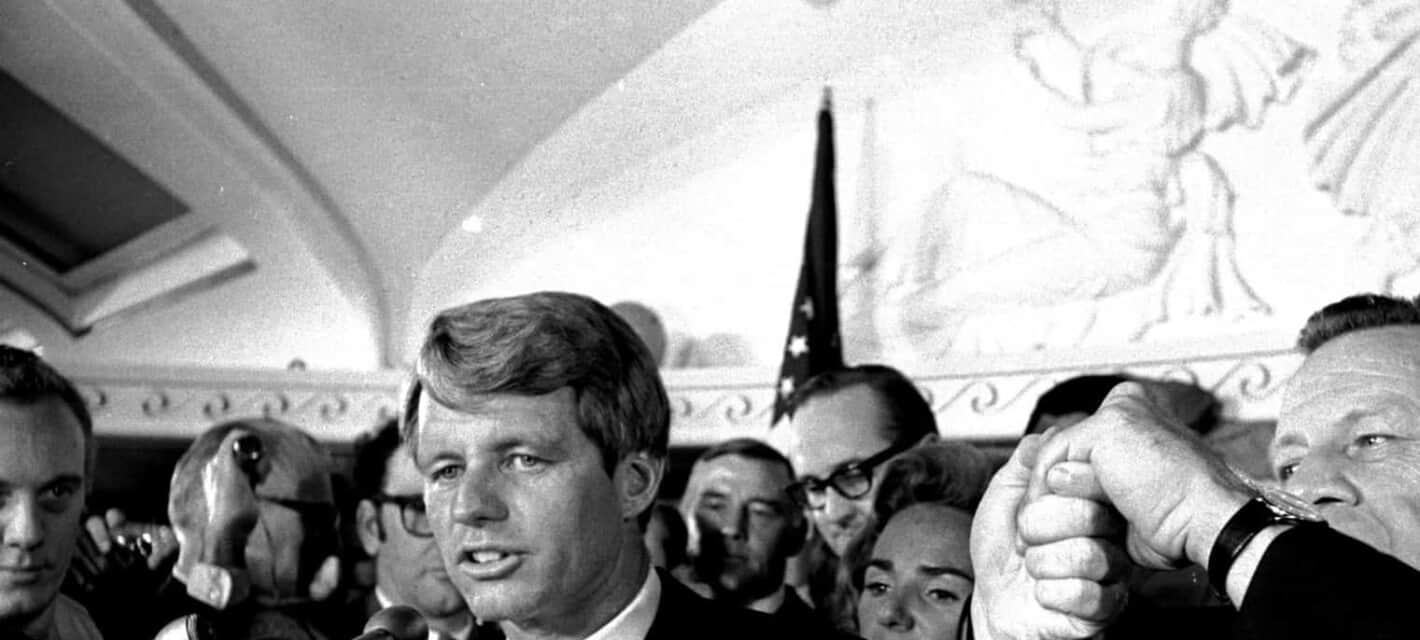Robert F. Kennedy was a United States Senator, and the brother of former President, John F. Kennedy who was slain on November 22, 1963. Also known as Bobby, the younger Kennedy brother seemed destined to follow in John’s footsteps and become the nation’s President. Sadly, he could only follow him to an early grave as he was struck down by the bullets of an assassin on June 5, 1968.
It happened in the Ambassador Hotel in Los Angeles as Kennedy was celebrating his victory in the Californian presidential primary. Much has been written about the assassination but let’s delve deeper by focusing on 10 of the most fascinating facts, theories and ‘what ifs’ about the death of RFK.

1 – Kennedy Was Murdered by a Sirhan Sirhan, a Palestinian/Jordanian Immigrant
According to the official story, Sirhan fired four bullets at Kennedy with a .22 caliber Iver-Johnson Cadet Revolver from close range. While one bullet passed through the victim’s jacket, one hit him in the head, and two more struck the senator in the back. A total of six people were shot at the scene, but Kennedy was the only one to die. After carrying out his mission, Sirhan continued to fire his weapon until he was disarmed by a group of people. After a minute, he broke free and tried to fire his gun again, but it was empty.
Sirhan was born in Jerusalem in 1944, but his family emigrated to the United States when he was 12. After a brief spell in New York, the family moved to California. His father, Bishara, was extremely strict and regularly beat his sons. Bishara returned to the Middle East alone soon after the family came to California. Meanwhile, Sirhan did not become an American citizen and kept his Jordanian citizenship. After changing church denominations several times in his twenties, Sirhan finally settled on the Ancient Mystical Order of the Rose Cross which he joined in 1966.
It is widely interpreted that he was motivated by politics in the Middle East. When police searched his apartment after the murder, they found an entry on May 19, 1968, which said that Kennedy had to die, specifically before June 5, 1968. It was a significant date because it marked the first anniversary of the beginning of the Six Day War between Israel and several of its Arab neighbors. At his trial, Sirhan claimed that his hatred of Kennedy began when he discovered that the senator was pro-Israeli.
However, this all overlooks the fact that Sirhan had obvious psychological problems. At his trial, Sirhan’s lawyers tried to defend their client’s actions by virtue of diminished responsibility. However, Sirhan claimed his actions were the result of “20 years of malice aforethought.” The trial lasted two months, and at its conclusion, Sirhan was found guilty and sentenced to death. The sentence was commuted to life imprisonment in 1972, and at the time of writing, Sirhan is still languishing in San Diego County’s Richard J. Donovan Correctional Facility.

